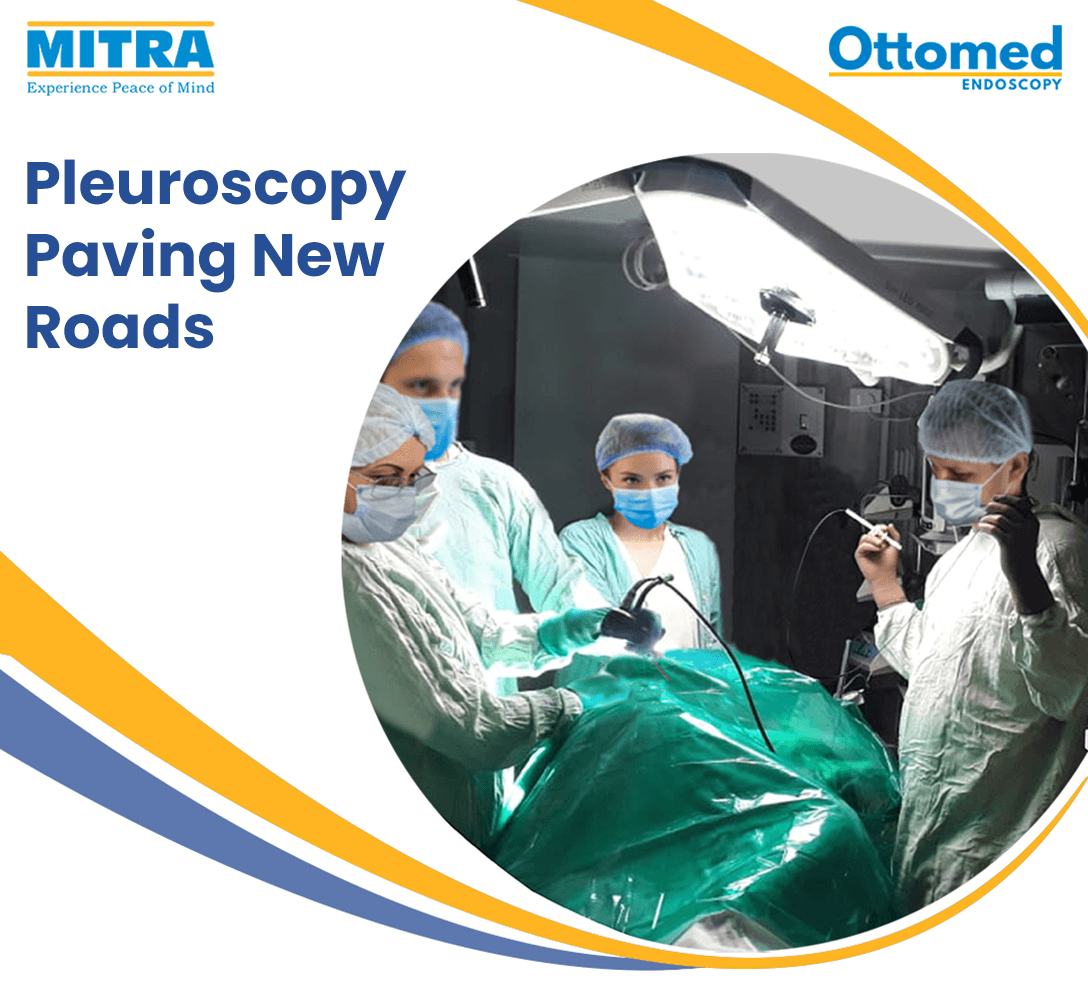Connect with Us
Looking for expert guidance on endoscopic solutions?
Reach out to us and explore imaging innovations that transform medical diagnostics.
Looking for expert guidance on endoscopic solutions?
Reach out to us and explore imaging innovations that transform medical diagnostics.
By MITRA GROUP |

Pleural effusion refers to the abnormal fluid accumulation in the pleural space, as a result of an imbalance between the formation and removal of pleural fluid. Sometimes referred to as “water on the lungs,” it is the build-up of excess fluid between the layers of the pleura outside the lungs. Pleural disease, which affects more than 300 per 100,000 individuals each year worldwide, is not a disease itself but a presentation of a disease.
Pleuroscopy, also known as medical thoracoscopy, is an examination of the space between the lung and the chest wall, where a thin semi-rigid tube called a Pleurascope is inserted through the skin on the chest into the pleural space (space between the lung and ribs).
It is a minimally invasive procedure carried out to investigate the cause of fluid or air in the pleural space. Pleuroscopy is effective in the evaluation of pleural and pulmonary diseases when routine cytology and closed needle biopsy fail.
Pleuroscopy offers physicians a unique opportunity for the evaluation of the pleural space. It is a safe and well-tolerated procedure most commonly used in cases with exudative pleural effusion and is considered an appropriate alternative to VATS. It not only provides direct observation, takes biopsies, and drains the pleural fluid, but also enables management, such as pleurodesis.
Common risks and complications occur in more than 5% of procedures. Some experience persistent pain in the chest as the nerves between the ribs are bruised after the procedure. Some may even develop fever that should subside in a few days. Obese patients may have an increased risk of wound infection, chest infection, heart and lung complications, and thrombosis.
Pleuroscopy can be safely performed with both rigid and semi-rigid scopes. The choice of instrument depends on the indication for the procedure. The main indications for the use of a rigid pleurascope involve trapped lung, lysis of thick adhesions, empyema, and pneumothorax.
The semi-rigid pleurascope is similar in design (except the insertion tube section is rigid) and handling to the flexible bronchoscope and is compatible with a standard light source and video processor available in most bronchoscopy suites. This technological advance will ensure that pleuroscopy continues to enjoy expanded interest, both as a diagnostic and therapeutic tool.
Pleuroscopy will play a greater role in the future as more practitioners acquire the skill to determine when to use conventional rigid and semi-rigid instruments for different clinical scenarios.
Experience unmatched picture quality with Ottomed Video Pleuroscopes. The specially designed slim size and semi-rigid Ottomed Video Pleurascope is ideal for diagnostic and therapeutic pleuroscopy (thoracoscopy) procedures.
Its super bright & high-intensity Fibreless LED-At-Tip technology & the CMOS sensor’s outstanding image quality help endoscopists explore the smallest details with great ease. Its flexible angulation enables easy orientation in the pleural cavity. A fibreless LED-At-Tip technology makes the Ottomed Video Pleurascope light in weight.
Pleuroscopy is gaining popularity as the procedure of choice for diagnosing and treating exudative pleural effusions, which remain undiagnosed after thoracentesis. As pleuroscopic technology and techniques continue to evolve, it will certainly make new inroads into managing both simple and complex pleural diseases.
By Ottomed |
By MITRA GROUP |
By MITRA GROUP |
By MITRA GROUP |